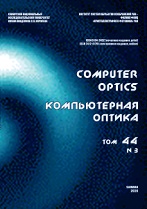|
This article is cited in 4 scientific papers (total in 4 papers)
NUMERICAL METHODS AND DATA ANALYSIS
Formation of features based on computational topology methods
S. N. Chukanov
Omsk Branch of Sobolev Institute of Mathematics, Siberian Branch of the Russian Academy of Sciences
Abstract:
The use of traditional methods of algebraic topology to obtain information about the shape of an object is associated with the problem of forming a small amount of information, namely, Betti numbers and Euler characteristics. The central tool for topological data analysis is the persistent homology method, which summarizes the geometric and topological information in the data using persistent diagrams and barcodes. Based on persistent homology methods, topological data can be analyzed to obtain information about the shape of an object. The construction of persistent bar-codes and persistent diagrams in computational topology does not allow one to construct a Hilbert space with a scalar product. The possibility of applying the methods of topological data analysis is based on mapping persistent diagrams into a Hilbert space; one of the ways of such mapping is a method of constructing a persistence landscape. It has an advantage of being reversible, so it does not lose any information and has persistence properties.
The paper considers mathematical models and functions for representing persistence landscape objects based on the persistent homology method. Methods for converting persistent barcodes and persistent diagrams into persistence landscape functions are considered. Associated with persistence landscape functions is a persistence landscape kernel that forms a mapping into a Hilbert space with a dot product. A formula is proposed for determining a distance between the persistence landscapes, which allows the distance between images of objects to be found.
The persistence landscape functions map persistent diagrams into a Hilbert space. Examples of determining the distance between images based on the construction of persistence landscape functions for these images are given. Representations of topological characteristics in various models of computational topology are considered. Results for one-parameter persistence modules are extended onto multi-parameter persistence modules.
Keywords:
pattern recognition, multivariate persistent landscape, Hilbert space. topological data analysis
Received: 11.07.2022
Accepted: 08.10.2022
Citation:
S. N. Chukanov, “Formation of features based on computational topology methods”, Computer Optics, 47:3 (2023), 482–490
Linking options:
https://www.mathnet.ru/eng/co1148 https://www.mathnet.ru/eng/co/v47/i3/p482
|

|




 Contact us:
Contact us: Terms of Use
Terms of Use
 Registration to the website
Registration to the website Logotypes
Logotypes








 Citation in format
Citation in format 
